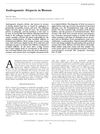Estuarine bed-sediment-quality data collected in New Jersey and New York after Hurricane Sandy, 2013
January 2015
in “
Data series
”
TLDR Hurricane Sandy increased contamination in estuarine sediments in New Jersey and New York.
The study conducted from June to October 2013 assessed the quality of estuarine bed sediments in New Jersey and New York following Hurricane Sandy in 2012. Funded by the Disaster Relief Appropriations Act of 2013, the U.S. Geological Survey, in collaboration with the U.S. Environmental Protection Agency and the National Oceanographic and Atmospheric Administration, collected samples from 167 sites to evaluate contamination and potential long-term impacts. The research analyzed particle size, organic carbon, metals, trace elements, and various compounds, using methods like x-ray fluorescence and bioassays for endocrine disruptors. The study aimed to understand contamination sources, compare pre- and post-storm sediment chemistry and toxicity, and assess rapid screening and bioassay methods in disaster scenarios.
